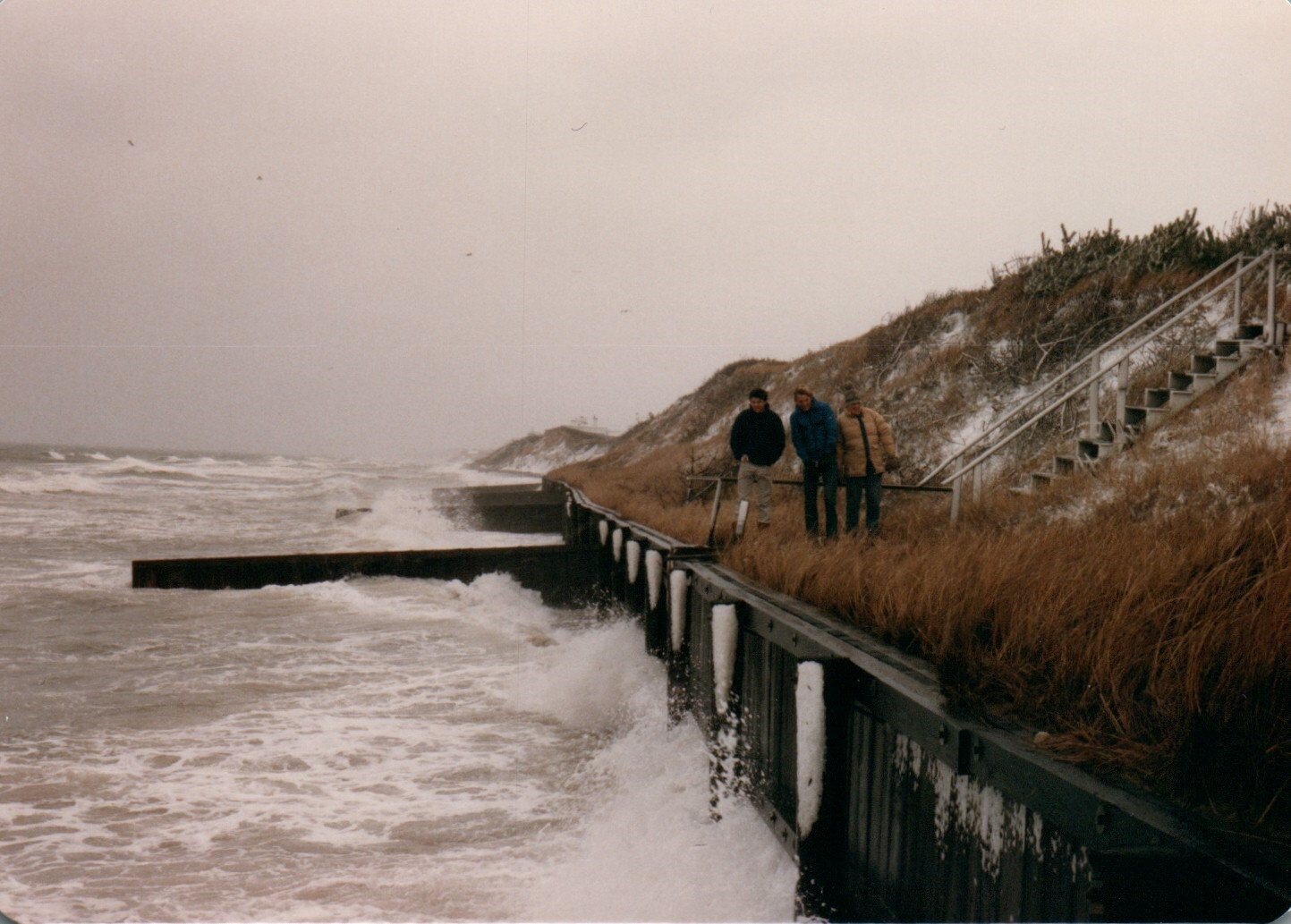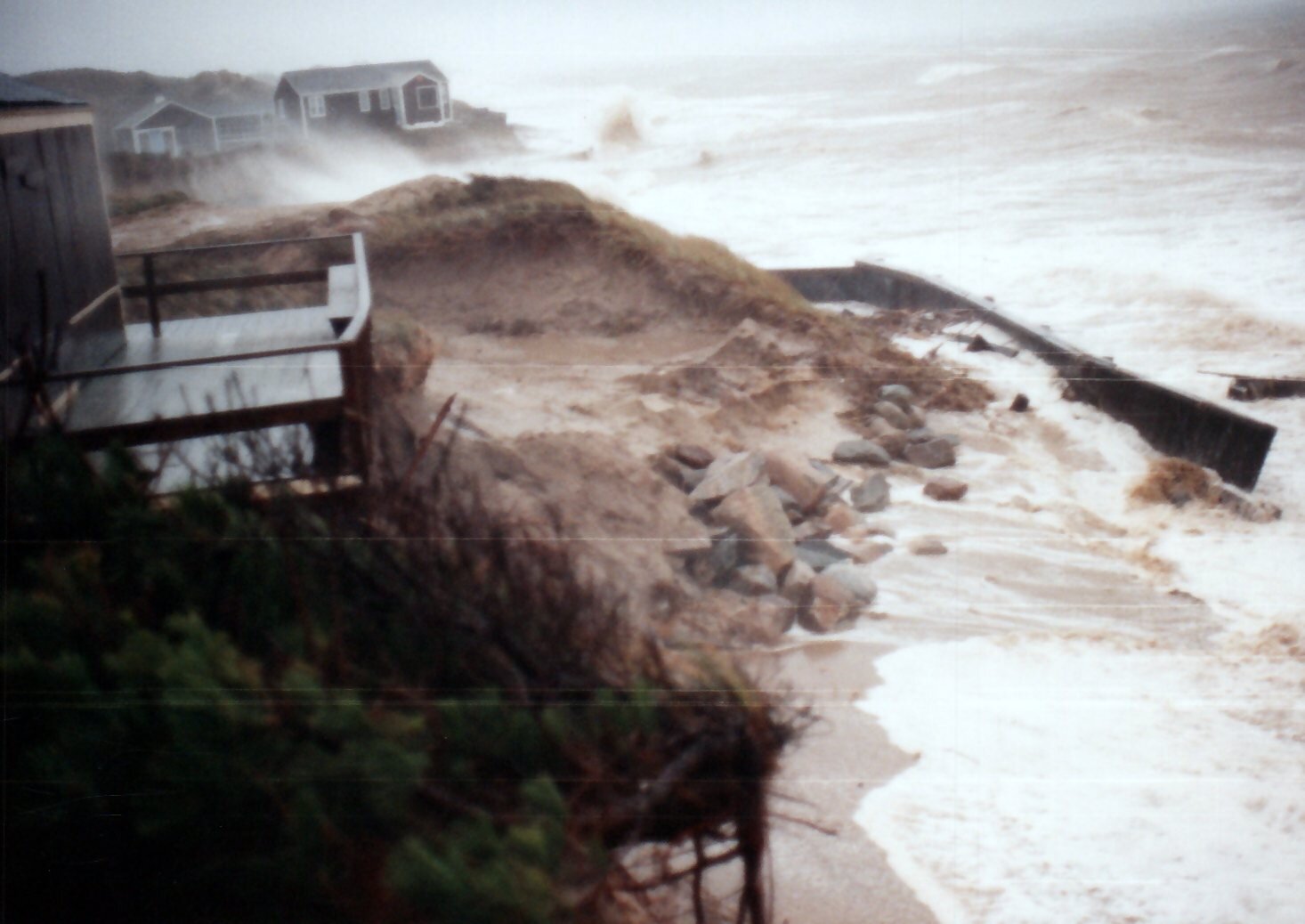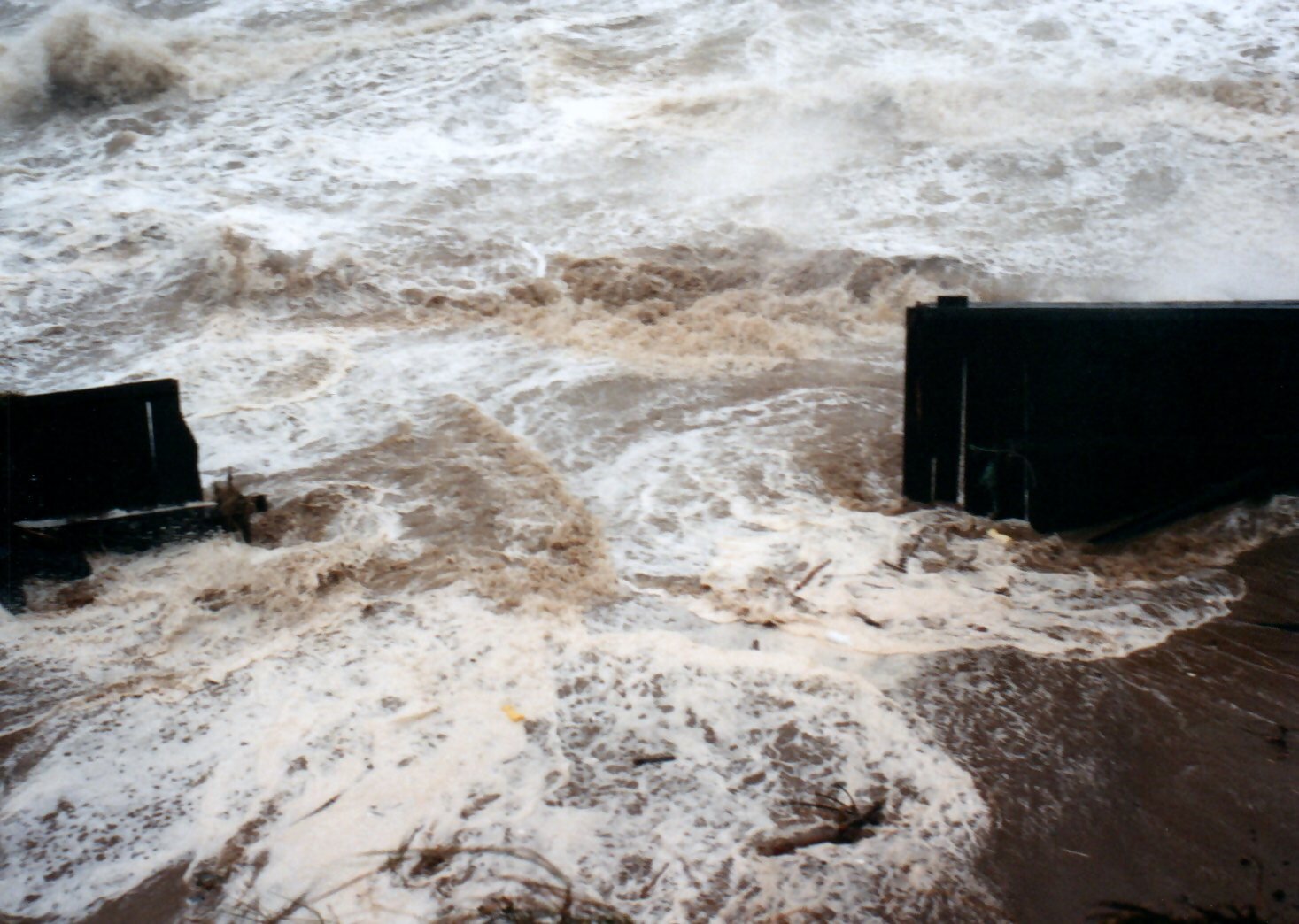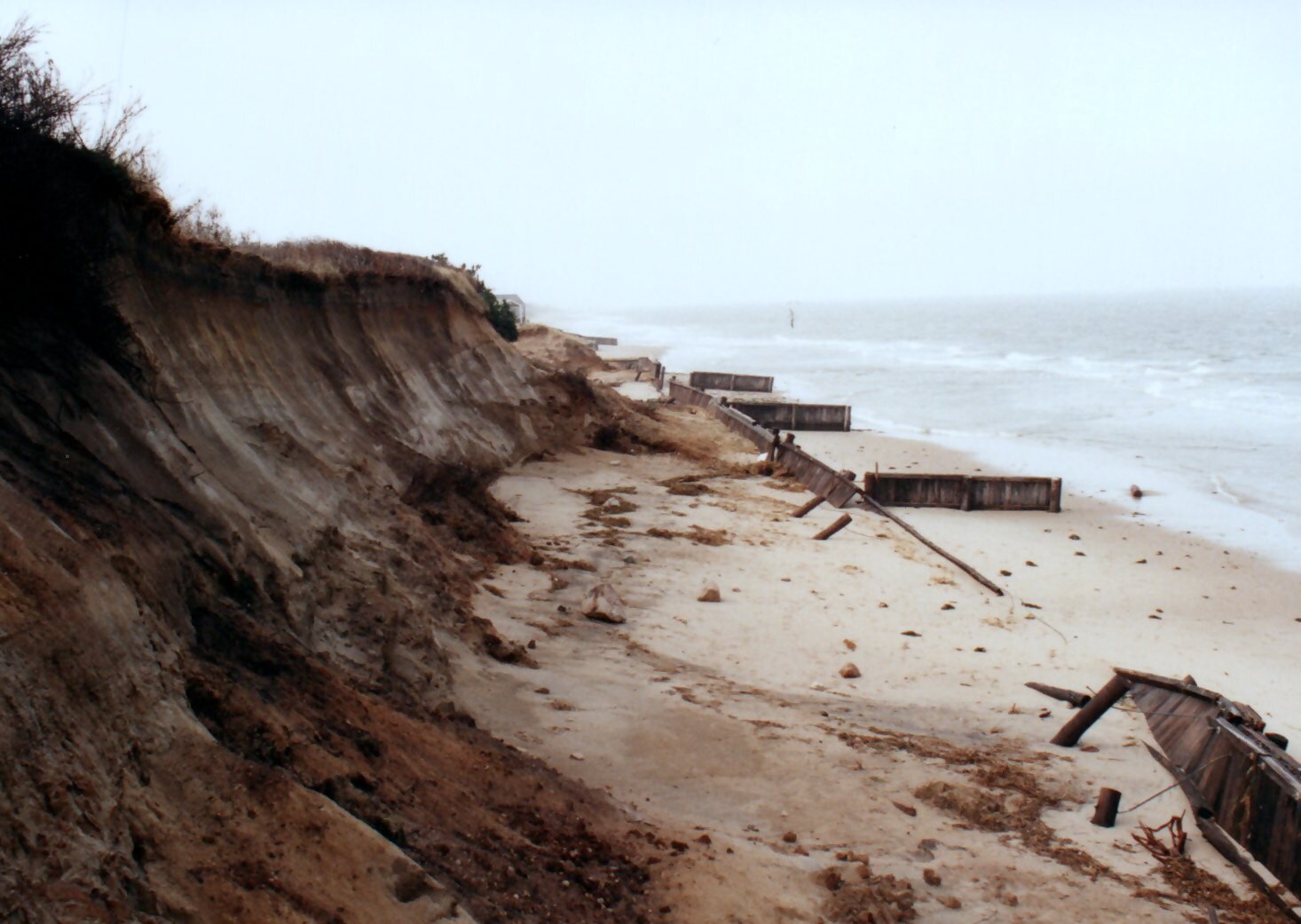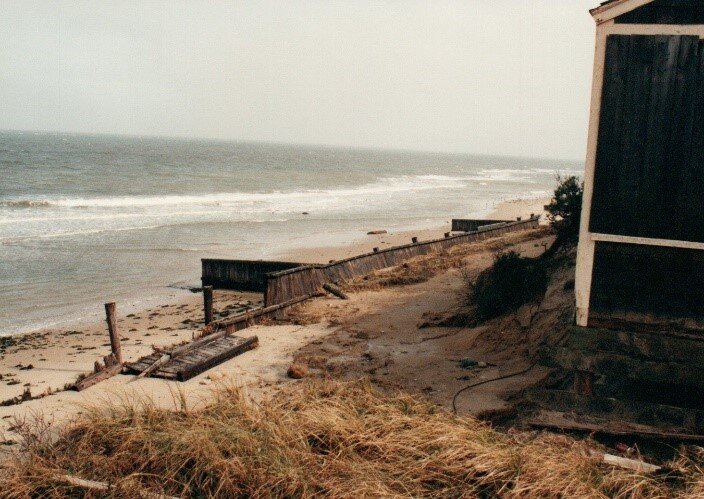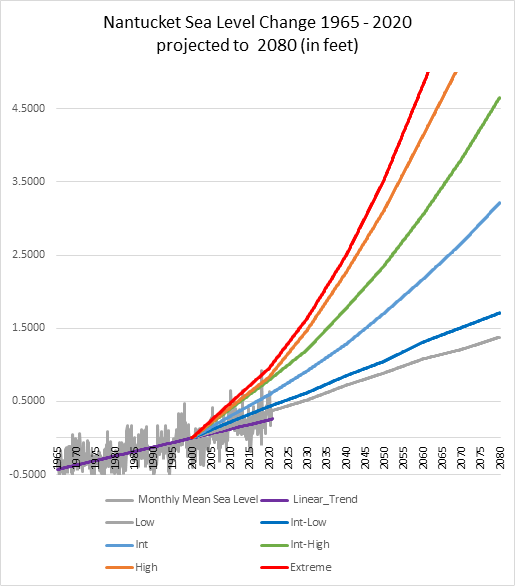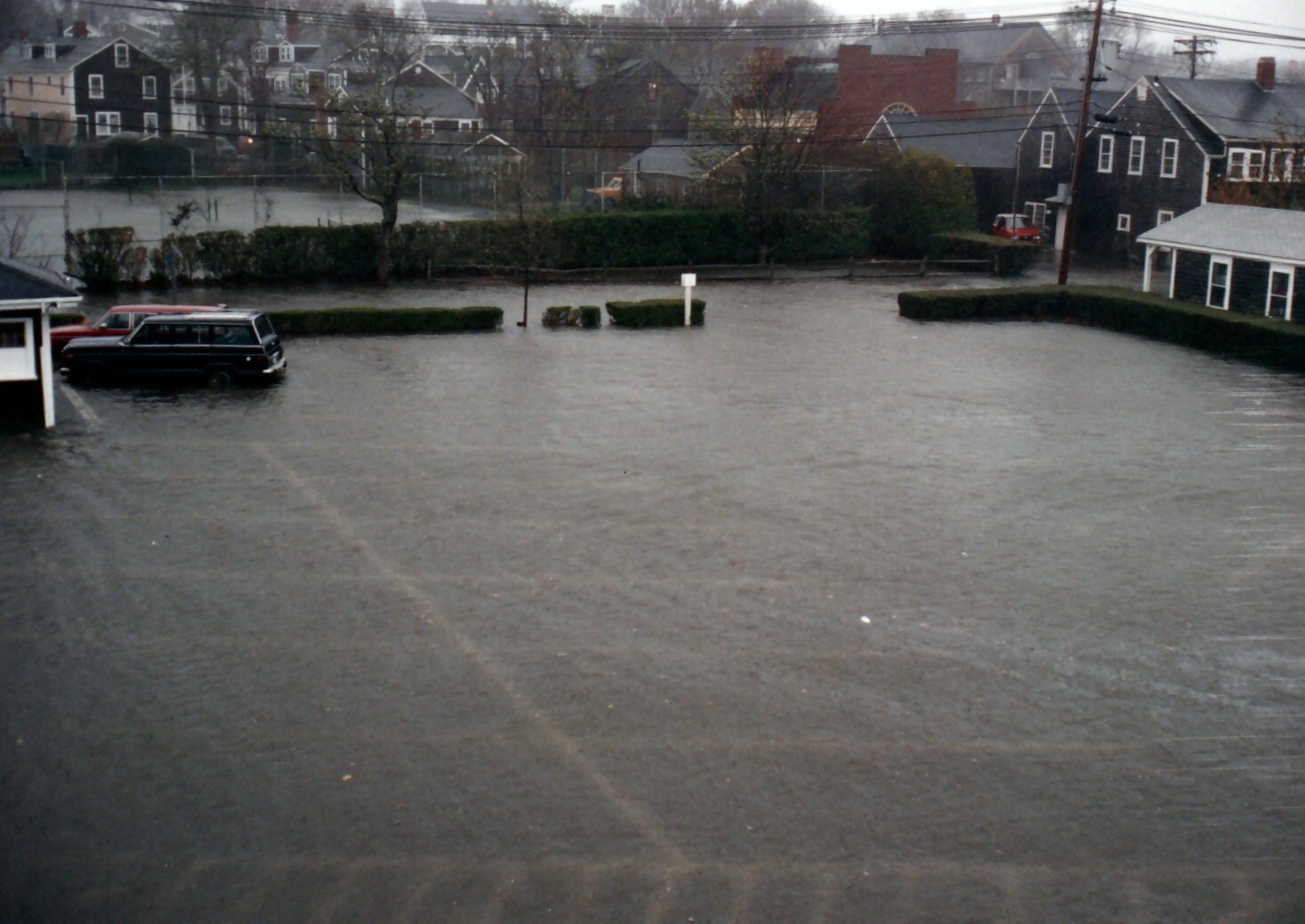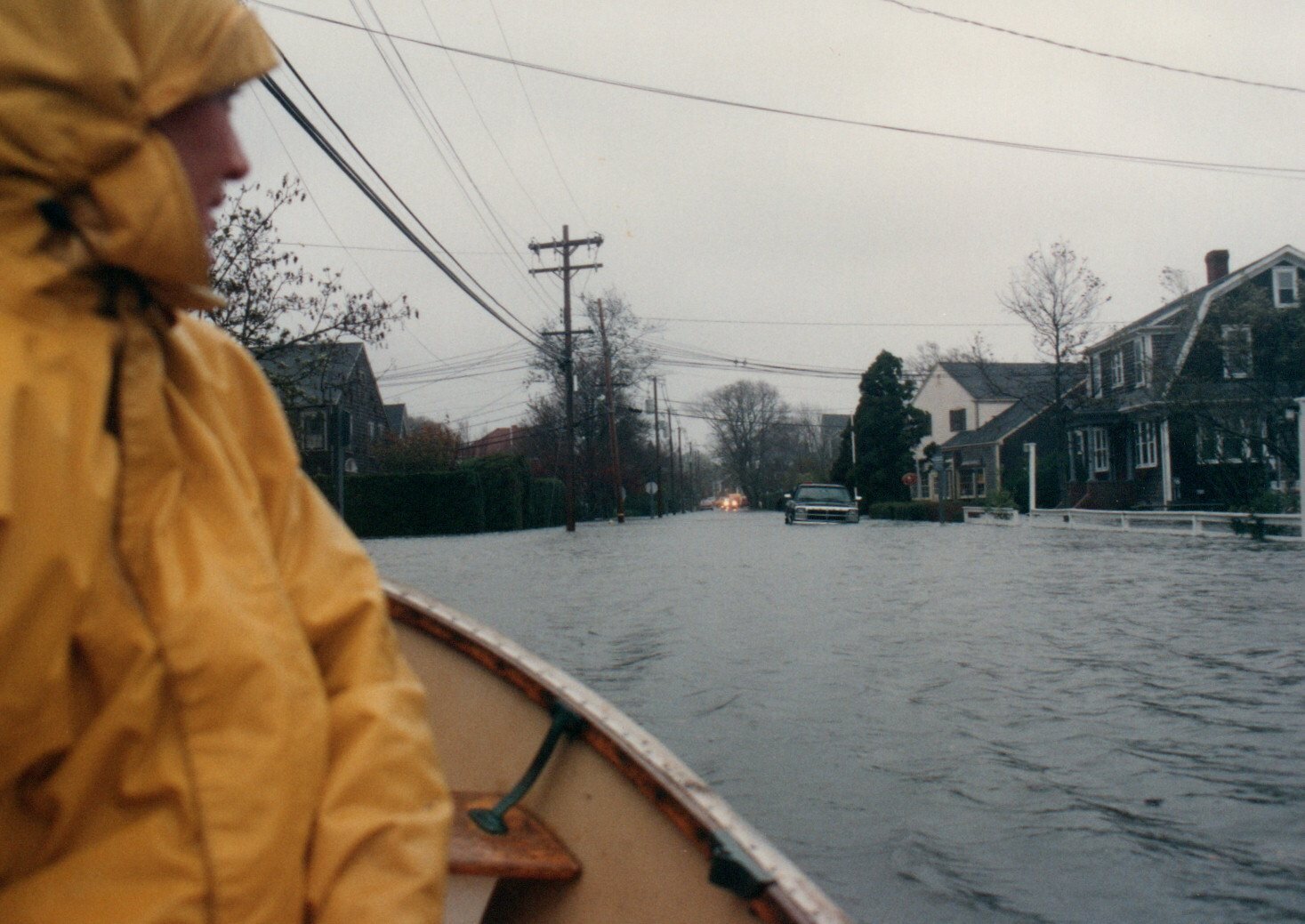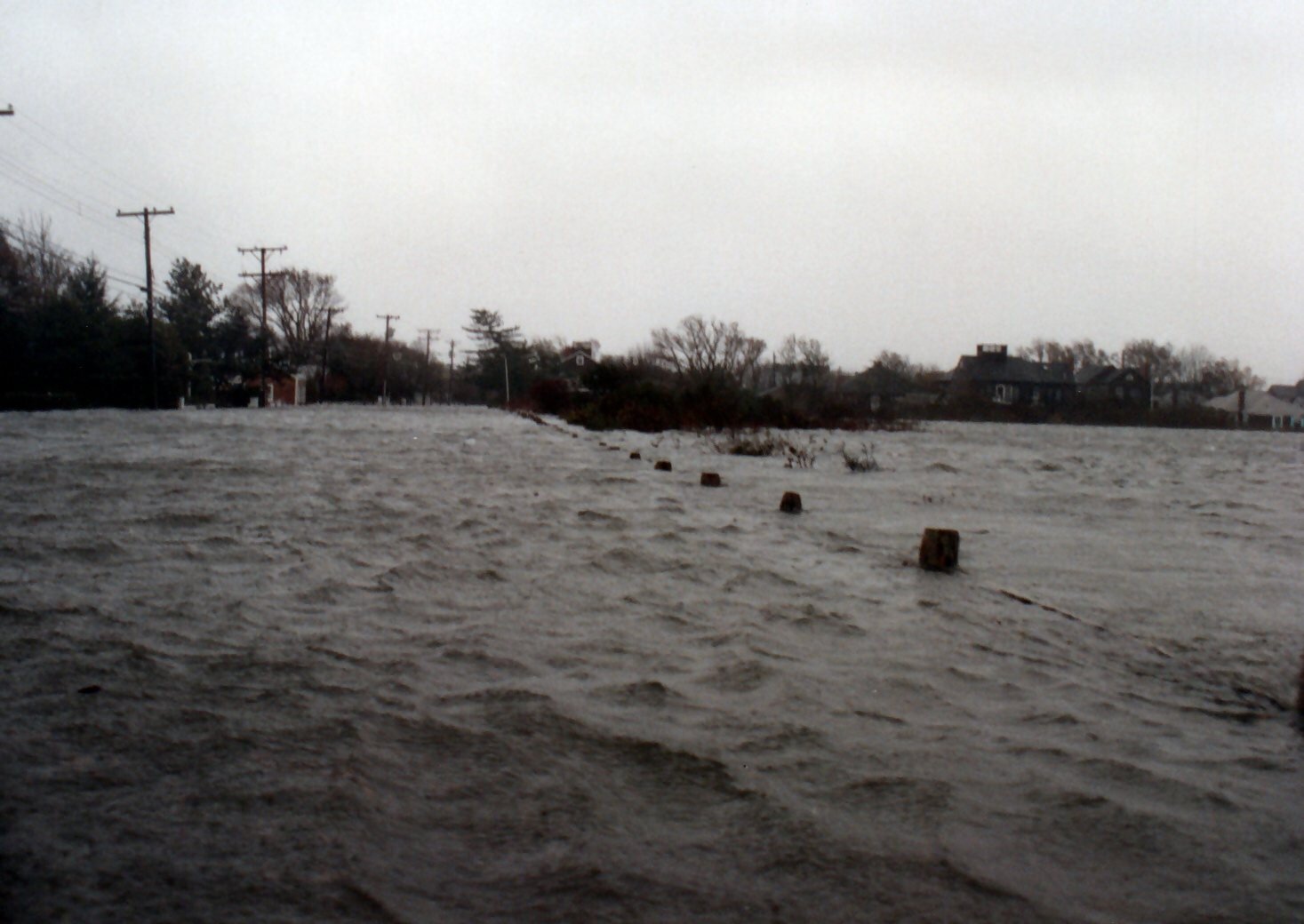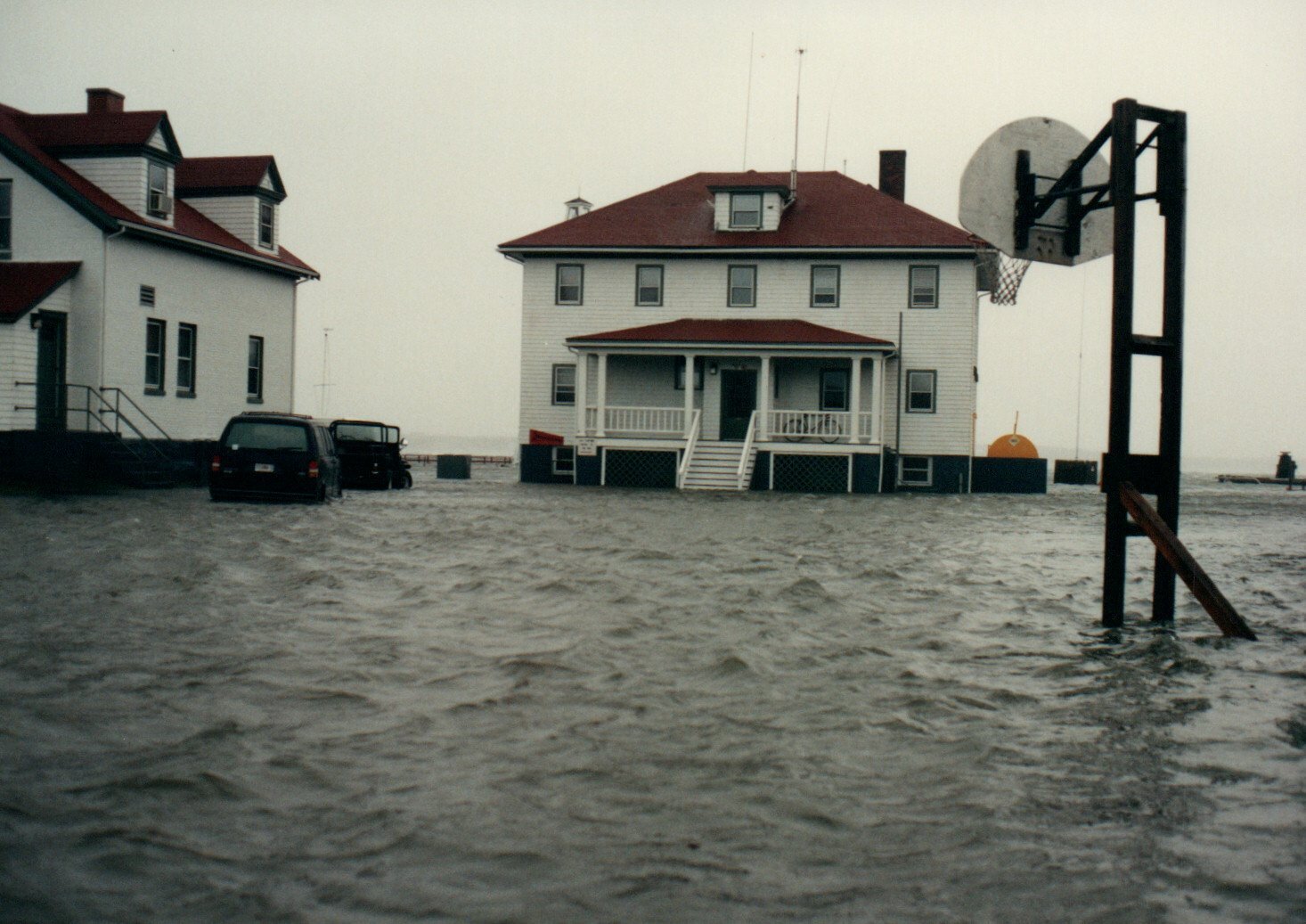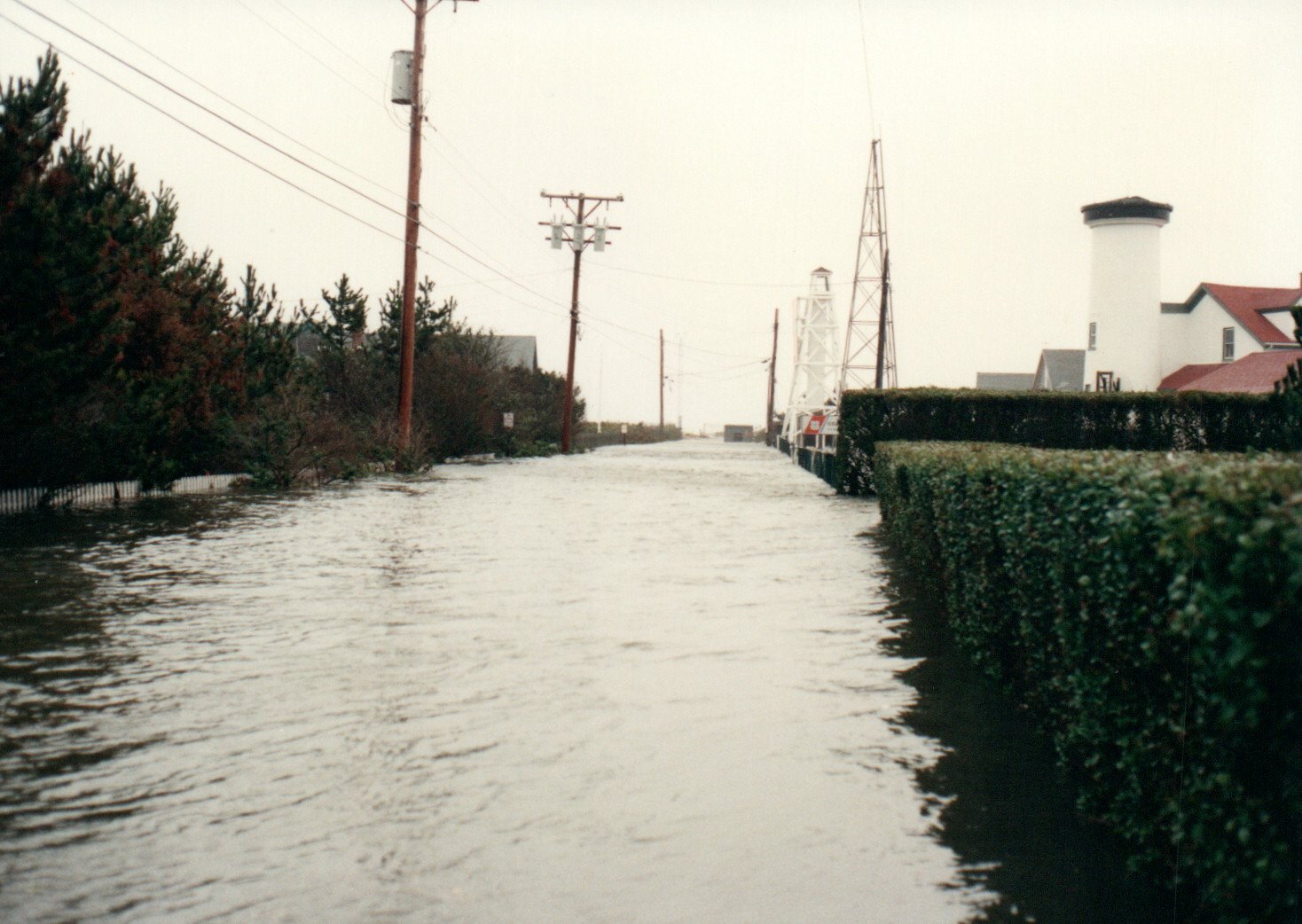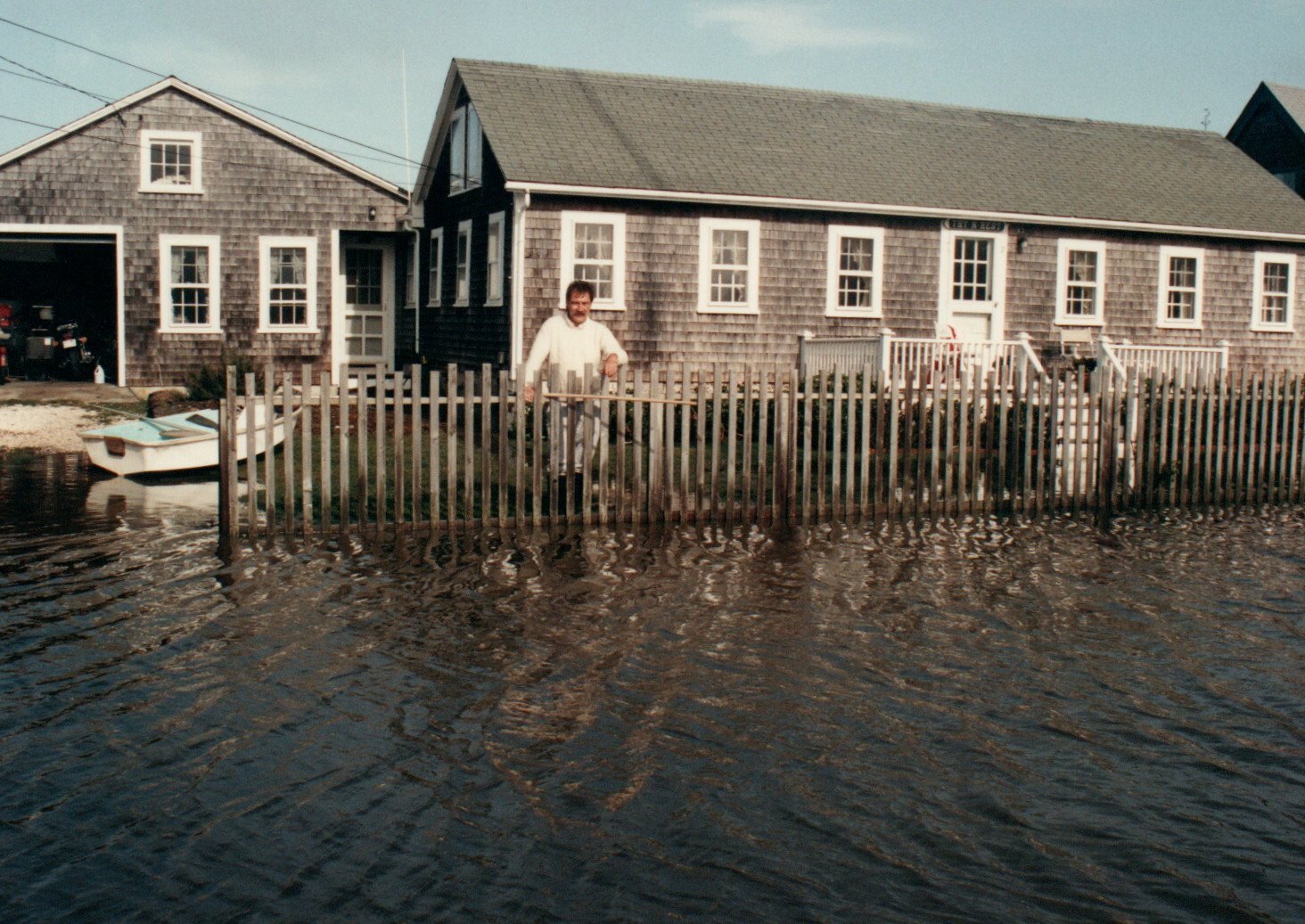Stories From Ashore: 90 Years on the Sea
Winter 1985, family members inspect a recently built bulkhead constructed to arrest erosion. The 1991 “No Name” storm would blow apart the bulkhead.
At Envision Resilience, we support the exploration of science-based, design-led, comprehensive explorations of how we can adapt to sea-level rise and we seek to amplify the anecdotal accounts of climate change in our community. In this series, Stories from Ashore, we will share stories of local Nantucketers and their experience with climate change, introduce you to people in our community who are imagining their way forward with increased water on their properties and discuss pathways forward. What will be your response to climate change?
By Skip Willauer
With all the “buzz” about climate change, rising seas, flooding and erosion, I thought it might be interesting to share my families’ experience with the sea on Nantucket over the past 90 years.
We have been kicking around the island since the 1600s. Storms, surges, flooding and erosion have been a fact of life. Completely unnoticed is the nine-inch rise in sea levels in the past 100 years—a rounding error compared to the 400-foot rise after the last ice age. This ice age and the ensuing global warming and rising seas created the island of Nantucket.
Early Nantucketer’s knew enough to build on high ground. I have often thought that much of the fuss about rising seas is simply people learning first-hand “the hard way” about building on the beach—a lesson we learned and dealt with for a long time before moving to higher ground.
After whaling died in the 1800s, my family moved off Nantucket and became “summer people.” My great-grandfather, Benjamin F W Russell, an MIT architect, builder and grandson of the famous whaling captain, Daniel Russell (the Essex and Aurora) designed and built his wife, Sarah “Sally” Knapp Russell a house in Dionis. Upon seeing the house for the first time, she said, “Oh Ben, it is too big!” The house, called “Westcliff,” is shown below. A little “beach house” sat right on the bank.
The house was about 120 feet from the bank, shown above in images from 1932. The family learned very quickly (1934) that erosion was going to be an issue as a winter storm and surge scooped about 20 feet from the bank causing half of the beach house to fall off.
The beach house was moved well back from the cliff and life went on. Erosion continued year in and year out to greater or lesser extents based on whatever mother nature decided to dish out. There were good years and bad years, good decades, and bad decades.
By the early 1970s the family realized they needed to build a bulkhead to protect the house. The beach house was yet again dangerously close to the edge—so was the main house: 50 feet had been lost in 40 years. The house was 70 feet from the edge of the cliff. The photo in the above gallery to the right, shows the beach home in 1974 before the bulkhead was built.
In the late 1970s, the bulkhead was constructed, and erosion was arrested for a little over 15 years. On October 30, 1991, the island was hit by a “perfect” storm with a yet-to-be broken tidal surge of 4.6 feet. The storm blew the bulkhead apart, exposing the dune. The sand melted away like butter in a microwave taking close to an acre of land and almost the beach house.
The family hired Daylor Consulting to design the ultimate in erosion protection—a huge 20 foot high stone revetment which was approved and constructed in 1992. The stone revetment has been a huge success for 30 years. The only issue is lack of erosion control on neighboring property which means periodic “return” additions for continued protection.
The photos below show recent return construction as well as an aerial view of the property. Note how erosion continues up and down the beach where there is no protection. The photo below from Google Maps shows three separate properties with hard erosion control. Unprotected property has and will continue to erode.
In 90 years, what did my family learn about erosion on Nantucket?
If you build a house on the beach, expect erosion.
The best protection is a stone “hard” revetment.
Anything less than the above will not work for long.
The beach will disappear once you have protection.
Beach nourishment is necessary if you want to have a beach.
Nothing works forever, it is a constant battle.
Looking Forward
I am not a scientist, but I have learned from the past as well as from recent research that Nantucket can expect more erosion and flooding in the future—potentially much more.
The world is a different place than it was 100 years ago. An exploding human population is increasingly impacting the earth to the point where many scientists predict that the stable sea levels enjoyed throughout recent human history are coming to an end due to anthropogenic (human caused) greenhouse gas (CO2) emission (from fossil-fuels). These scientists have predicted startling projections of sea level rise in the relatively near future even if we are able to curb CO2 emissions.
CO2 has played a large role as a climate regulator throughout the history of earth. The warming and cooling of earth are primarily caused by two things: small variations in Earth’s orbit which change solar energy (heat) coming from the Sun and variations in atmospheric “green-house” gases. Greenhouse gases are necessary for life as they insulate earth from a very cold outer space. The gases include water vapor (H2O), carbon dioxide (CO2), Methane (CH4) and Nitrous Oxide (N2O). Carbon Dioxide appears to play the largest role.
The end of the last ice age came with a change in orbit and a massive release of carbon dioxide from the Southern Ocean. Carbon Dioxide levels increased by 50 percent and are believed to have accounted for 35 percent of the 4 degrees Celsius temperature increase. 65 percent was due to the sun.
Compared to most of earth’s history, humans in the modern world have enjoyed an unusually steady climate with stable sea levels. This allowed us to comfortably build large population centers next to the sea—including houses in Dionis.
While no human can know for sure what the future holds there are hundreds of studies and projections which have been assembled in a single document created in 2017 by the National Oceanic and Atmospheric Administration “NOAA” called “Technical Report NOS CO-OPS 083”—a source document for much of the current narrative on climate and sea levels. This document segments 5800 sea level projections into six categories.
We see monthly mean sea levels as measured by the tide gauge on Nantucket from 1965 through 2020 (in grey in chart above). Sea level has increased about 8.35 inches on the island during that period. The chart above then shows the projected sea level increases of the six different scenario segments.
The “median” of all the scenarios falls in the “Intermediate-Low” segment, where the vast majority (75 percent) of the scenarios lie. 96.4 percent of the scenarios fall between Low and Intermediate, which predicts three more feet of water in 60 years. More water will mean more erosion and flooding for Nantucket—especially during storms. So, more of the same, potentially much more should be expected on Nantucket.
Scenes from the 1991 “No Name” storm, courtesy of Skip Willauer.
I am no expert on what should done to “save” our little island but what I do know is that with no effort the island will continue to disappear—as it has been doing for an awfully long time. If seas do continue to rise, the challenges will increase in direct proportion to whatever happens.
It is feasible that at some point in the future there will be no Nantucket Island. The history of climate and sea level on earth is one of extreme volatility with sea levels in the past ranging from 400 feet lower to 600 feet higher than today.
So, while some of the more extreme projections seems “wild,” the history of earth tells us otherwise. The range of possibilities is enormous.
Do you have a story to share about the impacts of climate change on your property, business or family? Email us at newsletter@envisionresilience.org!


